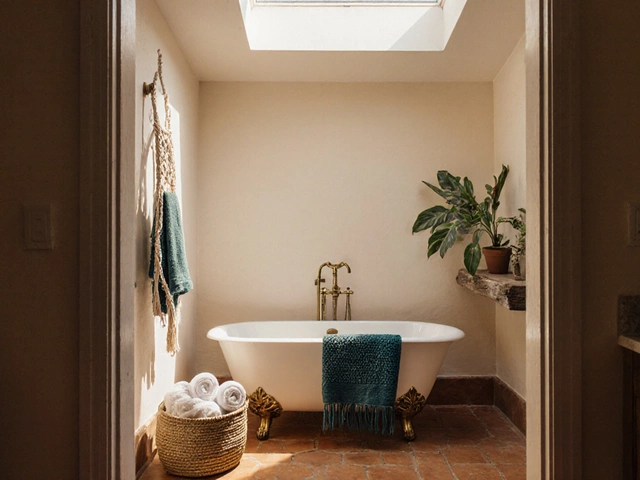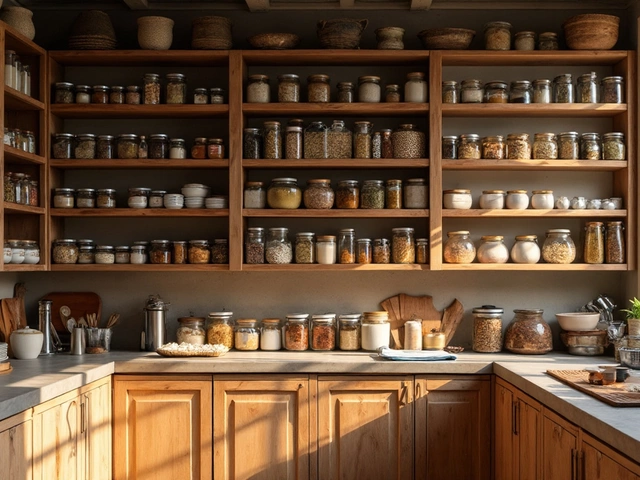Most Luxurious Rug Materials: What Reigns Supreme?
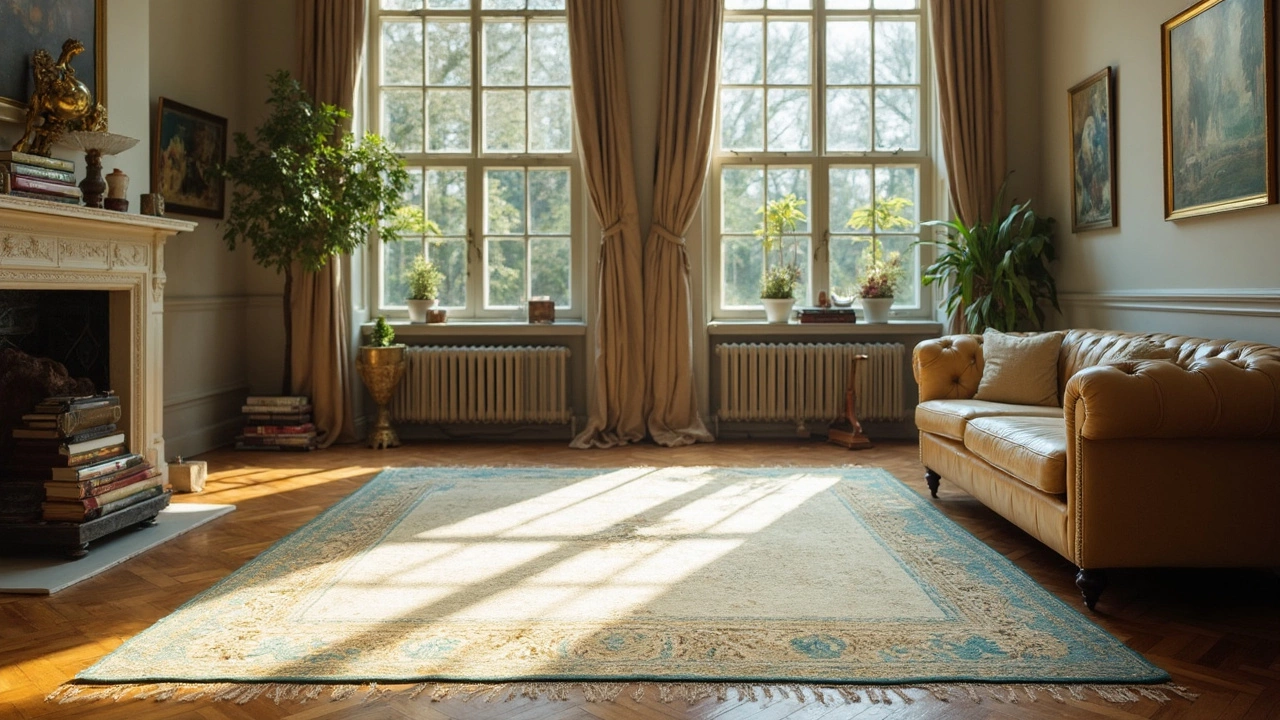
If you think a rug is just something soft underfoot, you’re missing out on a whole world of luxury. Some rugs are so exclusive, they practically need their own security detail—and that extravagance comes down to the material. Not all rug fibers are created equal; a mass-produced synthetic will never match the magic of something woven from hand-spun silk or rare, highland wool.
Why such a fuss over materials? The real difference is in the feel, the look, and the status. A silk rug glows in the light, showing off color depth you won’t see anywhere else. Special wools like those from Tibetan or New Zealand sheep have a softness (and durability) that synthetic imitations can’t hack. If you’re considering splurging, or you just want to know what makes a rug truly high-end, you need to know exactly what goes under your feet—and what it really costs. Fancy labels and high prices don’t always add up to real luxury, so let’s cut through the hype and see what’s worth your money.
- What Defines Luxury in Rug Materials?
- Silk: The Crown Jewel of Rug Fabrics
- High-End Wool and Its Unique Allure
- Alternative Lux Materials: Sourcing the Rare
- Tips for Owning, Caring, and Buying Luxurious Rugs
What Defines Luxury in Rug Materials?
You can spot a luxurious rug right away, but what exactly makes it a cut above the rest? It’s not just about the price tag. The materials used are the number one factor—and they decide how the rug feels, shines, lasts, and even how people react when they walk into your room.
Think of luxury in rugs as a mix of three main things: rarity, craftsmanship, and performance. Let’s break these down:
- Rarity: The finest rugs use fibers that are tough to get, like all-natural silk or highland sheep’s wool. Some luxury rugs even use blends with rare fibers like cashmere or camel hair for exclusiveness.
- Craftsmanship: With premium rugs, the fibers are often spun and dyed by hand, not churned out by machines. This means every rug is unique. You’re not just getting a floor covering but a piece of handmade art.
- Performance: Top-tier materials handle foot traffic, sunlight, and spills better. Plus, they keep their beauty over the years versus cheaper options that flatten or fade fast.
So, what hits the top of the list? Here’s a quick look at some well-known rug materials and what sets them apart:
| Material | Feel | Shine | Longevity | Rarity |
|---|---|---|---|---|
| Silk | Ultra-soft | High (shimmer) | Moderate (best as decorative) | Very Rare |
| Highland Wool | Plush | Medium | Very High | Rare |
| Cashmere Blend | Cloud-like | Low | Medium | Extremely Rare |
| Synthetic Fibers | Varies | Varies | Low | Common |
Notice how luxury isn’t always about softness or shine. The real magic comes from a blend of material quality and skilled handiwork. That’s why the most sought-after luxury rugs are hand-knotted with the finest materials—there’s no shortcut to that level of detail or beauty.
If you want a rug that feels amazing underfoot, makes a visual statement, and stands the test of time, it’s all about what it’s made from and how it’s made. Keep this in mind before you buy, because a rug that looks fancy on Instagram might not hold up if the materials are lacking.
Silk: The Crown Jewel of Rug Fabrics
Ask around in the rug world and you’ll hear it again and again—nothing screams luxury like silk. It’s been the go-to for royalty and collectors for centuries. Genuine silk rugs are made with threads spun straight from silkworm cocoons. Each cocoon yields just enough filament for a couple of inches, so it takes thousands to weave a single rug. No wonder silk rugs have sky-high price tags.
What makes silk stand apart from everything else? First, it’s all about the shine. Silk fibers catch and reflect light in a way wool or synthetics just can’t. Walk into a room with a silk rug, and you’ll see that subtle shimmer almost change color as you move. The details in the patterns appear razor-sharp because dyed silk holds color so well. And even more—these rugs feel cool to the touch and unbelievably soft underfoot.
This isn’t just hype. Sarah Baehrel, curator at the Textile Museum in Washington, D.C., says,
“The brilliance and clarity of color in silk rugs make them stand out from any other material. Collectors consider them works of art, not just floor coverings.”
But let’s not sugarcoat: silk rugs take some serious TLC. They stain easily—red wine or coffee will spell disaster if not cleaned up fast. Regular vacuuming should be done on a low setting, and heavy foot traffic is a no-go unless you want wear marks. Silk is best for rooms where the rug can be more like a centerpiece than a doormat.
- If you buy a silk rug, keep shoes off and rotate it a few times a year to prevent fading from light exposure.
- Spot clean with water—no harsh chemicals, ever.
- Leave deep cleaning to the pros who know how to treat silk.
That said, for pure wow factor, luxury rugs don’t get better than silk. They aren’t just investments in style—they’re often investments that appreciate in value, especially for well-made Persian or Kashmiri pieces. Just don’t expect low maintenance; with silk, you’re committing to care along with that stunning look and feel.
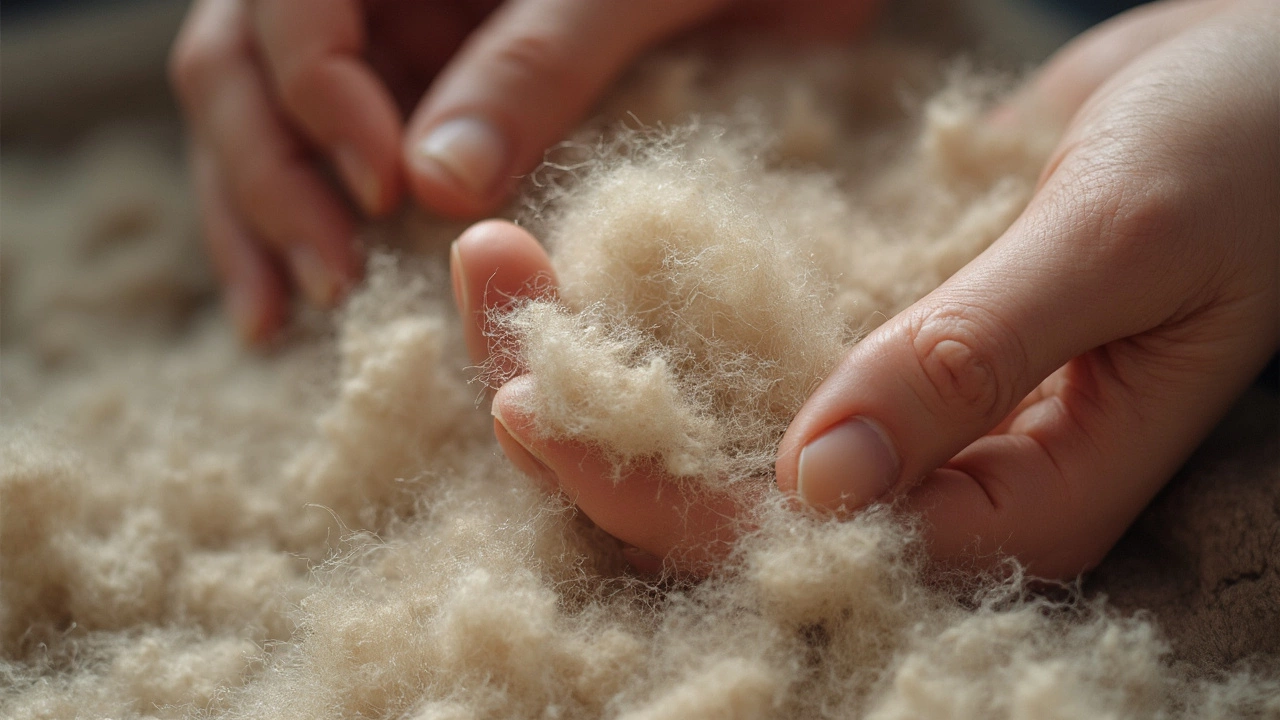
High-End Wool and Its Unique Allure
When you picture luxury underfoot, silk might get the spotlight, but high-end wool deserves a big moment too. The cream of the wool crop comes from specific breeds and places. Ever heard of New Zealand wool or Tibetan highland sheep? These are industry legends for a reason: the softness, the bounce, and that naturally bright, creamy white color. Rugs made from this sort of wool look richer and last longer.
The big deal with good wool is how it feels. Unlike run-of-the-mill wool that can be scratchy, high-end options are all about that plush, cushy sensation. Plus, they keep their shape thanks to natural elasticity—so even when you move your heavy furniture around, the pile bounces back. A wool rug is also a lifesaver for busy rooms; dirt and spills don't cling the same way they do to synthetics.
Premium wool also handles dye like a champ, which means more intense colors and designs. Walk into a Persian rug shop, and the most prized rugs are often pure wool, especially from sheep raised at high altitudes.
“Tibetan highland wool’s texture and resilience make it one of the most sought-after materials for luxury floor coverings. Its unique fibers hold vibrant dyes and survive decades of daily use,” says rug expert Jane Polanco of the International Rug Institute.
Want your investment to last? Look for terms like "hand-knotted" and “100% New Zealand wool” or “Tibetan wool” on tags. Still, these rugs aren’t maintenance free:
- Vacuum regularly, but avoid beater bars—they can fuzz up the fibers.
- Blot, don’t rub, spills to dodge stains.
- Rotate your rug every few months to keep wear even.
- If in doubt, call a pro cleaner every year or two.
That mix of toughness, beauty, and comfort is why top wool rugs are staples in design magazines. Whether you go for a vintage find or something modern, high-end wool stays a favorite for anyone who wants luxury without worry.
Alternative Lux Materials: Sourcing the Rare
Most people hear "luxury rug" and think of silk or the best wool, but there are some other wild-card materials out there that command serious attention (and cash). These are the kinds of rugs you’ll brag about, because hardly anyone else has one.
One surprise entry is cashmere. This material is famous for expensive sweaters, but it’s even more exclusive in rugs. Cashmere rugs are hand-made and super soft, but don’t expect them to stand up in a busy hallway. Their delicate fiber makes them more art than utility, and their price tag reflects that. Another rare find is alpaca wool. The top versions are sourced from specific areas in Peru, where alpacas roam at high altitudes. Alpaca fibers give you a warm, glossy look and are less prickly than regular sheep’s wool. Not cheap, but you get bragging rights and a totally unique vibe.
If you want to go all out, there’s vicuña fiber. Vicuñas are wild cousins to alpacas, and their fur is the most expensive animal fiber in the world. Good luck finding a rug at any regular shop—these are custom-only and can cost more than a car. These rugs are thinner, lighter, and about as soft as it gets. But they require careful handling—think “display piece” rather than “family room centerpiece.”
Some designers go eco-friendly and use upcycled luxury materials. These rugs might mix reclaimed silk, rare organic cottons, or even bamboo silk (which has a real sheen and smoothness). While not as fancy as cashmere or vicuña, they’re definitely eye-catching and a little bit better for the planet.
If you ever shop for these, best tip: always ask for the source. Authenticity matters because there are plenty of look-alikes. Check for a certificate of origin, especially with cashmere and vicuña. Rug shows, art galleries, or trusted online platforms are your go-to sources. Just remember, with rare luxury rugs, buying smart is as important as buying expensive.
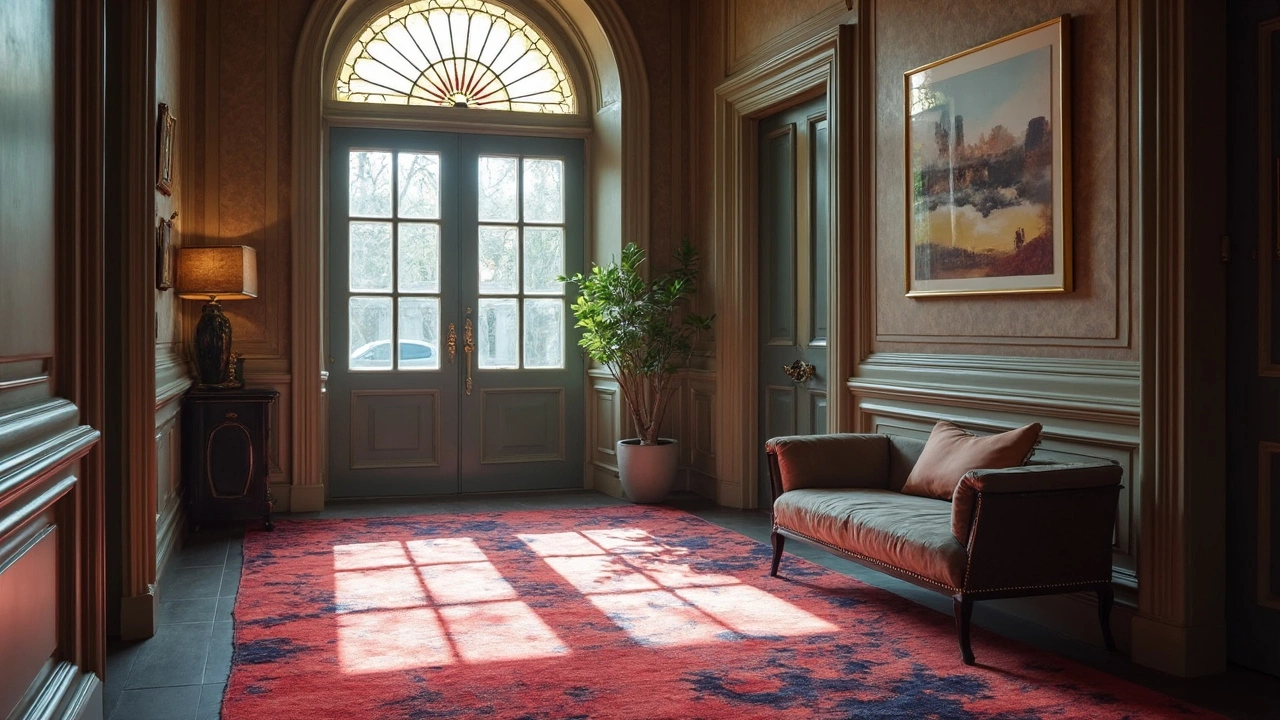
Tips for Owning, Caring, and Buying Luxurious Rugs
Dropping serious cash on a high-end rug is a big move, so you want to treat it right. Good care helps your rug hold its value—and, honestly, you don’t want it looking tired after just a year. Here’s what you really need to know before and after you bring that luxury rug home.
- Luxury rugs demand gentle vacuuming (no rotating brushes on silk or fine wools). Go easy—once a week is enough for most. For silk, a handheld vacuum or an old-school broom is safest.
- Turn your rug every year or so to spread out the wear, especially in busy spots like living rooms. Direct sunlight fades colors fast, so use curtains or blinds to keep your rug looking fresh.
- Spilled wine or coffee? Blot it, don’t rub it. Use a clean, dry cloth, and add a little cold water if needed. Still looking stained? Call a rug specialist—don’t risk random supermarket cleaners.
- If you’re buying, check for hand-knotted construction. Not all luxury rugs are genuinely handmade. Cheap machine-made silk? It exists, and it’s nowhere near the real thing. Flip a corner—if the back shows tight, individual knots, it’s the real deal.
- Wool and silk blends can give you the best of both worlds: softness, glow, and strength. Just know: the more silk, the more delicate and higher the price.
Check out this quick snapshot of what you’ll pay—and how long your rug should last with proper care:
| Material | Average Cost per Sq Ft | Lifespan (with care) |
|---|---|---|
| 100% Silk | $80 – $200 | 30+ years |
| High-End Wool | $50 – $120 | 50+ years |
| Wool & Silk Blend | $60 – $150 | 40+ years |
One last tip: always ask for a certificate of authenticity when buying a pricey rug. Real hand-knotted rugs (especially in silk) often come with serial numbers or official documents. If the deal seems too good to be true—it probably is.



